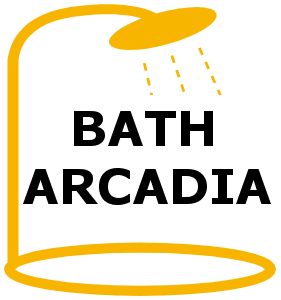A low-flow shower head is a device that can help you save water and energy while still enjoying a satisfying shower. But how does low-flow shower head work, and what are the benefits of using one?
A low-flow shower head is a device that reduces the amount of water that flows through your shower while still providing a comfortable and satisfying shower experience.
But how does a low-flow shower head work? And what are the benefits of using one? This article will answer these questions and more.
What is a Low-flow Showerhead?
A low-flow shower head is a type of shower head that has a lower flow rate than a standard shower head. The flow rate is the amount of water that comes out of the shower head per minute, measured in gallons per minute (gpm) or liters per minute (lpm).
A standard shower head typically has a flow rate of 2.5 gpm (9.5 lpm) or more, while a low-flow shower head has a flow rate of 2.0 gpm (7.6 lpm) or less.
There are two main types of low-flow shower heads: aerating and laminar-flow. An aerating shower head mixes air with water to create a misty spray that feels more voluminous and forceful.
A laminar-flow shower head produces more uniform and gentle streams of water.
Depending on your preference, both types can provide a satisfying shower experience.
How Does a Low-flow Shower Head Work?
A low-flow shower head works by restricting the amount of water that passes through it, using different mechanisms such as:
- Pressure-compensating valves: These valves adjust the water pressure according to the water flow, ensuring a consistent spray regardless of the water pressure in your pipes.
- Flow restrictors: These are devices that limit the size of the opening through which water flows, reducing the water flow.
- Spray holes: These are the holes in the shower head that determine the shape and size of the water spray. A low-flow shower head may have smaller or fewer spray holes than a standard shower head or spray holes that are arranged in a certain pattern to create a more efficient spray.
Using these mechanisms, a low-flow shower head can reduce the amount of water flowing through your shower by up to 40% while maintaining enough water pressure and coverage to give you a comfortable and enjoyable shower.
What Are the Benefits of Using a Low-flow Showerhead?
Using a low-flow shower head can have many benefits for you and the environment, such as:
- Saving water: Using less water in your shower can conserve this precious resource and reduce your water bill. According to the Environmental Protection Agency, switching to a low-flow shower head can save an average household about 2,700 gallons (10,220 liters) of water per year.
- Saving energy: Using less hot water in your shower can save energy and reduce your electricity or gas bill. Heating water accounts for about 17% of the energy use in an average home, according to the U.S. Department of Energy. Switching to a low-flow shower head can save an average household about 330 kilowatt hours (kWh) of electricity or 20 therms of natural gas per year, which is equivalent to powering a 50-inch LED TV for a year or cooking 48 meals on a gas stove, respectively.
- Reducing greenhouse gas emissions: By saving energy, you can reduce your carbon footprint and help fight climate change. According to the EPA, switching to a low-flow shower head can prevent about 440 pounds (200 kilograms) of carbon dioxide emissions per year, equivalent to taking a car off the road for two weeks.
How to Choose and Install a Low-flow Shower Head?
If you are interested in installing a low-flow shower head in your home, here are some tips to help you choose and install one:
- Look for the WaterSense label: The WaterSense program is a partnership between the EPA and manufacturers that certifies products that meet high water efficiency and performance standards. A WaterSense-labeled shower head has a flow rate of 2.0 gpm (7.6 lpm) or less and has been tested to ensure a satisfactory shower experience.
- Consider your preferences: Different low-flow shower heads offer different spray patterns and sensations. You may want to try different models at your local hardware store or online before buying one. You may also want to look for features such as adjustable settings, easy-to-clean nozzles, anti-clog design, etc.
- Follow the installation instructions: Installing a low-flow shower head is usually an easy DIY project without special tools or skills. You must unscrew your old shower head and screw on the new one from the shower arm. However, some models may require additional steps, such as applying a plumber’s tape or removing flow restrictors. Follow the manufacturer’s instructions carefully and check for any leaks after installation.
Key Takeaways
- A low-flow shower head is a device that uses less water than a standard shower head by reducing the water volume or increasing the water pressure.
- Low-flow shower heads have two types of sprays: aerated and non-aerated. An aerated spray mixes air with water, creating a softer and cooler water flow. A non-aerated spray does not add air, creating a stronger and hotter water flow.
- Low-flow shower heads can help you save money on your water and energy bills by using less water and heating less water for your showers.
- Low-flow shower heads can also help you conserve water and reduce environmental impact by using less of this precious resource.
- Low-flow shower heads come in different designs and features that suit your preferences and needs. When choosing one, you should consider factors such as flow rate, type of spray, design, features, price, and quality.
Conclusion
A low-flow shower head is a simple and effective way to save your home’s water, energy, money, and the environment.
By understanding how it works and what benefits it offers, you can make an informed decision about whether to switch to one.
If you decide to install one, you can find many options and resources online or at your local hardware store.
.

